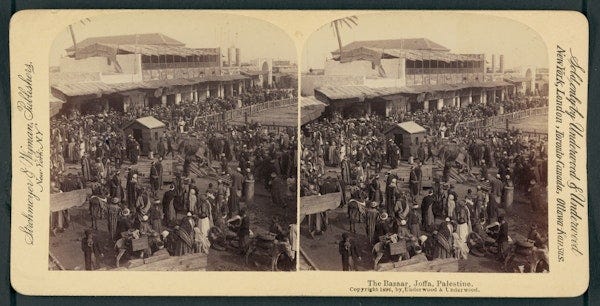By Sophie Khouri
War, conflict, humanitarian crisis, all words frequently used to describe life in Palestine since the Israeli occupation began in 1948. But what was life like before the Nakba? Let’s travel back to the early 1900s and take a look at the demographics, culture, and everyday life of people in Palestine before 1948.
Context
To preface this, let’s look at a brief timeline of Palestine from the late 1800s to 1948. Up until 1918, Palestine was under the rule of the Ottoman Empire. In 1918, World War 1 ended and Britain gained rule over Palestine. Previously, in 1897, a journalist named Theodor Herzl founded the ideology of Zionism, the movement to establish a Jewish nation in the land of Palestine. In 1917, the Balfour Declaration was issued, stating Britain’s support of a Jewish state in Palestine. However, Britain had also promised Palestine to the Arabs. Over time, from 1918–1939, there was a steady migration of European Jews to Palestine. Then, World War 2, alongside the Holocaust of 6 million European Jews by the Nazis, led to a spike in migration. Initially, they were welcomed by the native population, but in 1948 their true intention to take the land came to light. On May 14, 1948, Israel was officially partitioned with 56% of the land that was originally Palestine. Leaving native Palestinians in the minority.
Demographics
According to an 1878 Ottoman census, the population in Palestine was 472,455 people consisting of 85.5% Muslim, 9.2% Christian, 3.2% Jewish, and 2.1 foreign-born Jews. By 1918, the population in Palestine had topped 660,000 people with Jews now making up 8% of the population, still in the minority. From that point we see a big increase of Jews migrating to Palestine, especially after the Holocaust. By 1948, the Palestinian population had reached over 2 million people with Jews making up 31% of the population. Then, on May 15, 1948, the Nakba, meaning catastrophe, began in which approximately 800,000 native Palestinians were ethnically cleansed from their homes. This completely transformed the religious make-up of the land’s population. From that point on, Jews made up the majority in Israel with Muslims making up the majority in the West Bank and Gaza.
Culture and Everyday Life
Prior to the Israeli occupation, Muslims, Christians, and Jews lived together peacefully as neighbors. Although religion was an important aspect of culture, it was not reason for divide. The three Abrahamic religions of Islam, Christianity, and Judaism are important as Jerusalem is home to some of the most sacred sites in these religions. For example, Masjid Al-Aqsa is the 3rd holiest site in Islam, the Church of the Holy Sepulchre is the holiest site in Christianity, and Temple Mount is the holiest place in Judaism. Furthermore, life in Palestine was, and still is, highly reliant on agriculture. Most people owned land where they grew all types of fruits, vegetables, and especially olives. They sold their crops in street markets alongside butchers, bakers, and artisans. These street markets were central to the economy and still are today.
In conclusion, life in Palestine prior to the Israeli occupation was peaceful. Muslims, Christians, and Jews lived as neighbors and friends. Although the demographic make-up of the region has been altered, most aspects of the culture such as religion and agriculture have remained steadfast. Overall, we can take away that although the illegal Israeli occupation of Palestine has disrupted life, Palestinians continue to persevere by practicing their culture.




